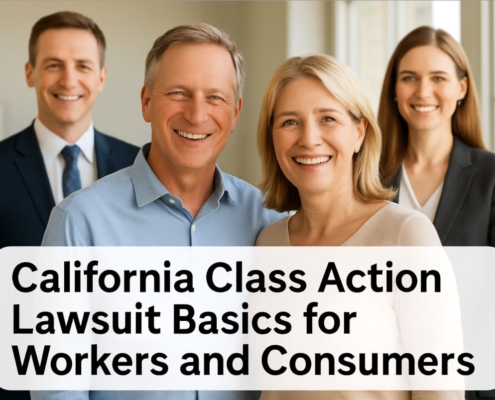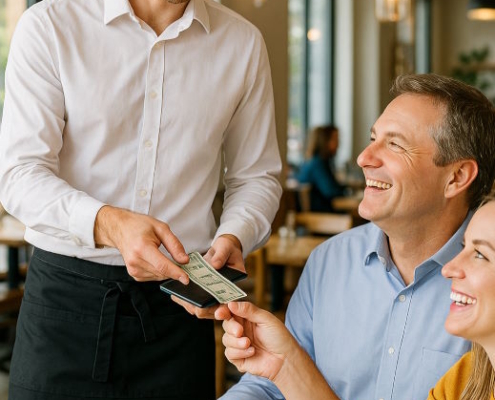Employee Termination Procedure Checklist
By Douglas Wade, Attorney
Email | Call (800) 484-4610
Employees leave companies every day for a variety of reasons. Employers may hope their employees won’t leave, but in reality, it happens. California Labor Commission states that for termination of employment, “Both the employer and the employee are free to end the employment relationship at any time, with no penalty being assessed to either.”
The average turnover rate for a business is 19%. It is important to have a resignation checklist and a termination checklist. You will need to have a formal discussion with the employee, collect company property, and get them to sign forms. Then you will need to update HR systems and payroll to reflect the resignation.
Follow the below steps:
Talk to the Employee Who Resigned
Even if the employee tells you face to face that they are quitting, have a private meeting with them. In this conversation, if you haven’t already got their resignation letter, you need to ask for one. Discuss the next steps, the employee’s final day, set up an exit interview, and their responsibilities. If there is a notice period, ask your employee to ensure their work is wrapped up or handed over.
Document the Separation of Employment Process
Protect your company by documenting that you followed all company policy. Record the effective termination date in the employee’s file alongside information about the decision. You must send the employee a formal termination letter which details their date of termination and the status of their benefits.
Follow Protocol
Under no circumstances are you to improvise the termination procedure. All termination and resignation procedures must be consistent with protecting your company from legal action. There must be a logical sequence of steps that you or your management follow.
Create a Separation of Employment Package
Similar to a hiring package, which contains all the paperwork and information they need, a separation of employment package should provide all information for terminated or resigned employees. This package should include HR contact information, any external resources, benefits paperwork, and a termination letter.
Pay Any Money Owed in The Final Paycheck
If you owe the employee money in the form of bonuses or unpaid expenses, then this should be included in the employee’s final paycheck. Employees also may have unused accrued vacation, sick, or personal leave. State laws will dictate when these final paychecks should be issued.
Explain Benefits
In some cases, an employee’s health benefits may continue under your company’s group health insurance policy. You must provide a COBRA form that explains the conditions of the employee’s ongoing health benefits and when the benefits will finish.
You could also give your employees a benefits status letter that outlines any information on the retirement and life insurance plan programs. In California, you must also provide information about how to collect unemployment benefits.
Update Contact Information
You might have to contact your employee after your separation. For example, you might need to send them a W-2 Form. Make sure you update their contact details and ask them to notify you of any changes to their address in the near future. Explain the reasons why so the employee knows that it is beneficial to them. In some states, you may need to provide the employee with a separation document.
Inform Staff and Customers
Inform employees and customers who need to know about the employee’s departure. Keep the details brief and reassure everyone that business will run smoothly while the position is being filled. Inform everyone who will be looking after the employee’s responsibility and how to contact them.
It is in your best interest to avoid sharing information about the reasons why. People may press you for details, but it can cause problems if you share that information.
Create a Transition Plan
Anticipate there may be difficulty when there is a vacancy in your company. Make a plan for how to reduce the impact and how the employee’s responsibilities will be delegated. Also plan for how to replace the position.
Collect Company Property
By the employee’s last day collect any company property. This may include computers, a car, credit card, cell phones, keys, or anything else.
Remove Employee Access
At the end of the employee’s final day, they should be removed from access to your systems and the company building. Their passwords should no longer work, and cell phones, keys, or access cards should be collected.
Do the Paperwork
You need to give the employee paperwork for the future as well as ask them to sign some paperwork there. Provide the employee with a change of address form in case they move so you can send them a W-2 Form. Discuss if the employee wants you to provide references and if so, get their witness permission.
Give the employee a letter about the status of their benefits like a retirement plan, health insurance, and other benefits. Provide a COBRA form if applicable to detail their health insurance and when it will end.
Have an Exit Interview
Every termination must include an exit interview with a member of HR present. You can answer the employee’s questions and review the terms of non-compete agreements they signed when they started working with you.
After the legal stuff is out of the way, ask the employee questions about their time at your company. You can get feedback about areas for improvement and find out what they enjoyed about working for you. Make any changes if you see fit.
Discuss the Termination with Employees Who Need to Know
Briefly discuss the termination with employees who need to know. You may disclose the reasons for termination with HR and managers who need to know. However, the reasons should not be shared with the whole company and should be handled with compassion and discretion. Oversharing the details can cause bigger problems for your company.
Notify the IT Department
Once you separate with the employee, notify IT of the exact date and time when the employee’s access should be withdrawn. Block all access to the system and building, including disabling passwords and keycards. Collect any keys and keycards in the termination meeting.
Update Records
Ensuring your records are accurate at all times is your responsibility as a business owner. When an employee leaves your company, you need to update your payroll, update records, and HR software. You must hold onto taxes and payroll records for a number of years.
Keep records that prove your reasons for firing the employee for at least two years.
Distribute Final Paycheck
Each state has different laws as to how to give the employee their final paycheck. Some require it to be presented during the exit interview; others allow it to be mailed to an employee within a certain number of days of their final date of employment.
The final paycheck must repay the employee for any money you owe as well as unused accrued vacation and sick leave.
You can deduct any used but unaccrued personal time or salary advances from the final paycheck as well. If the amount the employee owes is greater than their final paycheck, collect the additional balance from them.
If you offer severance pay, communicate how the employee will receive their wages.
Have a quick question? We answered nearly 2000 FAQs.
See all blogs: Business | Corporate | Employment
Most recent blogs:































